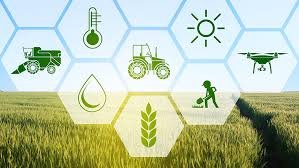Saturday, 22 November 2025

Truterra (formerly Land O’Lakes SUSTAIN) and Syngenta announced that they are collaborating to create a step-change in stewardship and conservation best practices for U.S. growers while helping them focus on maximizing acre-by-acre productivity and profitability.
This technology-based alliance will make use of data analytics from both Truterra Insights Engine and the Syngenta AgriEdge platform. The combined power of insights and expertise will help assess and improve soil health, carbon sequestration, GHG emissions, livestock lifecycle assessment and water management on American farms.
“We believe this long-term effort will enhance retailers’ experience when servicing growers that use the Truterra and AgriEdge systems,” says Jason Weller, vice president, Truterra, LLC. “In addition, Consumer Package Goods companies will have far greater visibility into their sourcing sustainability when working with both Syngenta and Truterra customers.”
“Teaming up our systems will reduce data entry for growers and retailers and enable seamless data flow,” says Aaron Deardorff, Syngenta head of Digital Solutions in North America. “This capability will enable growers to establish a baseline stewardship level on each agricultural field, benchmark against other fields they farm, or those in their geography, with the appropriate level of grower data privacy.”
Through this collaboration, growers will receive insights on what practices would be beneficial in advancing their stewardship efforts and understand the implications on each field’s profitability potential. The greater geographic footprint of the Truterra and Syngenta alliance will help support sustainability goals of food companies with multi-geography sourcing.
Tommy Jackson, Syngenta Sustainable Solutions lead for Digital Solutions adds, “Ultimately, we are partnering to make stewardship more streamlined and consistent for U.S. growers to help them and food companies better quantify sustainability progress in the food and Ag supply chain.”
“In time, we aim to be the leader in conservation and sustainability within the agricultural value chain and related non-government organizations (NGOs),” says Weller.